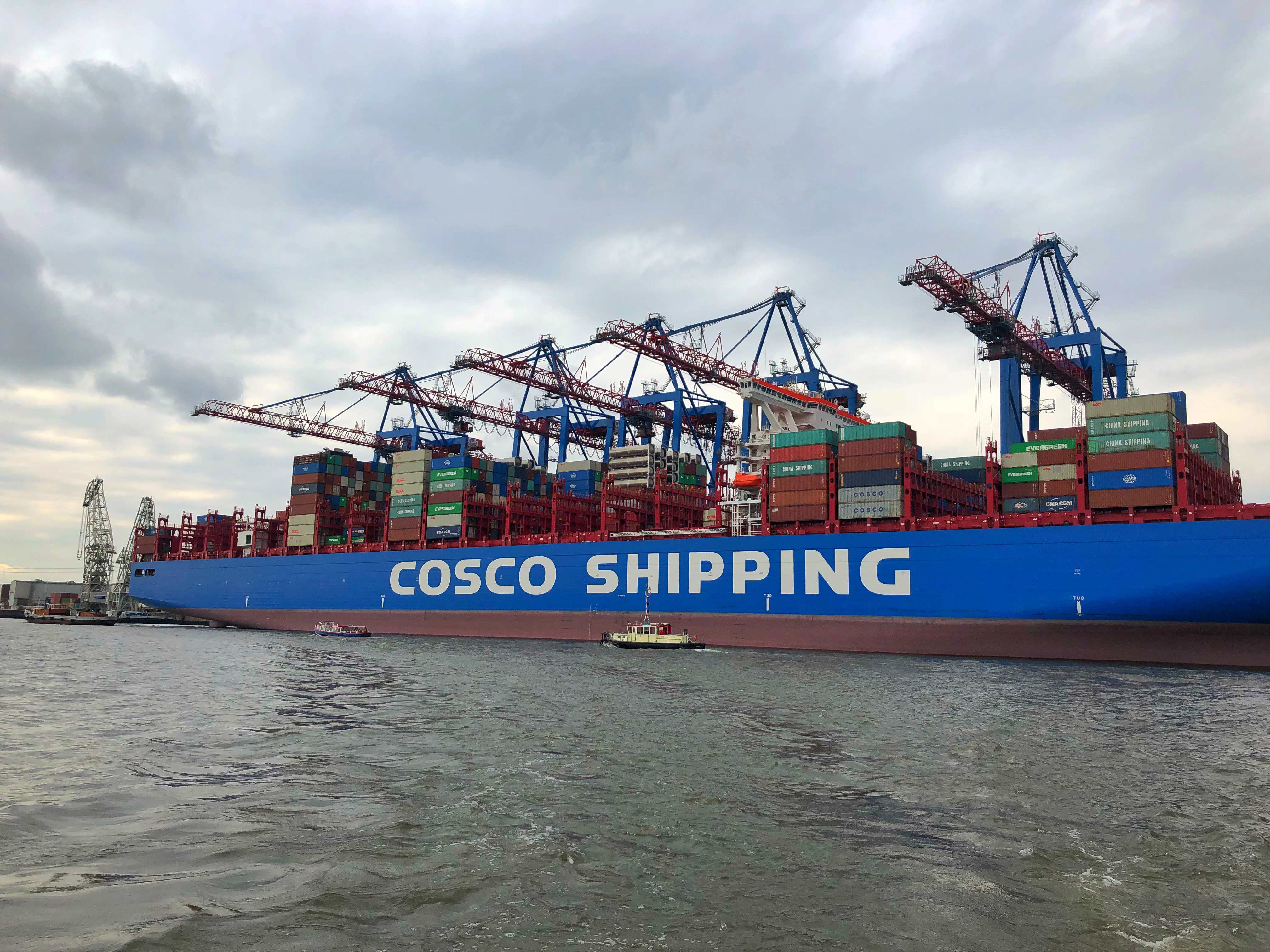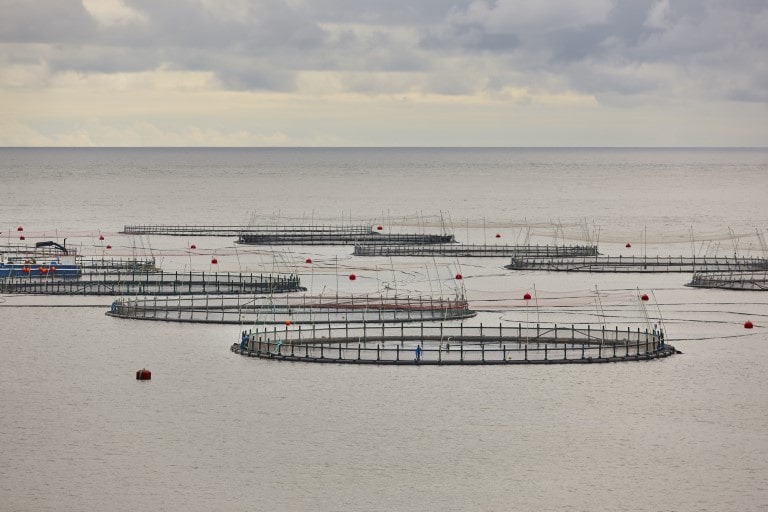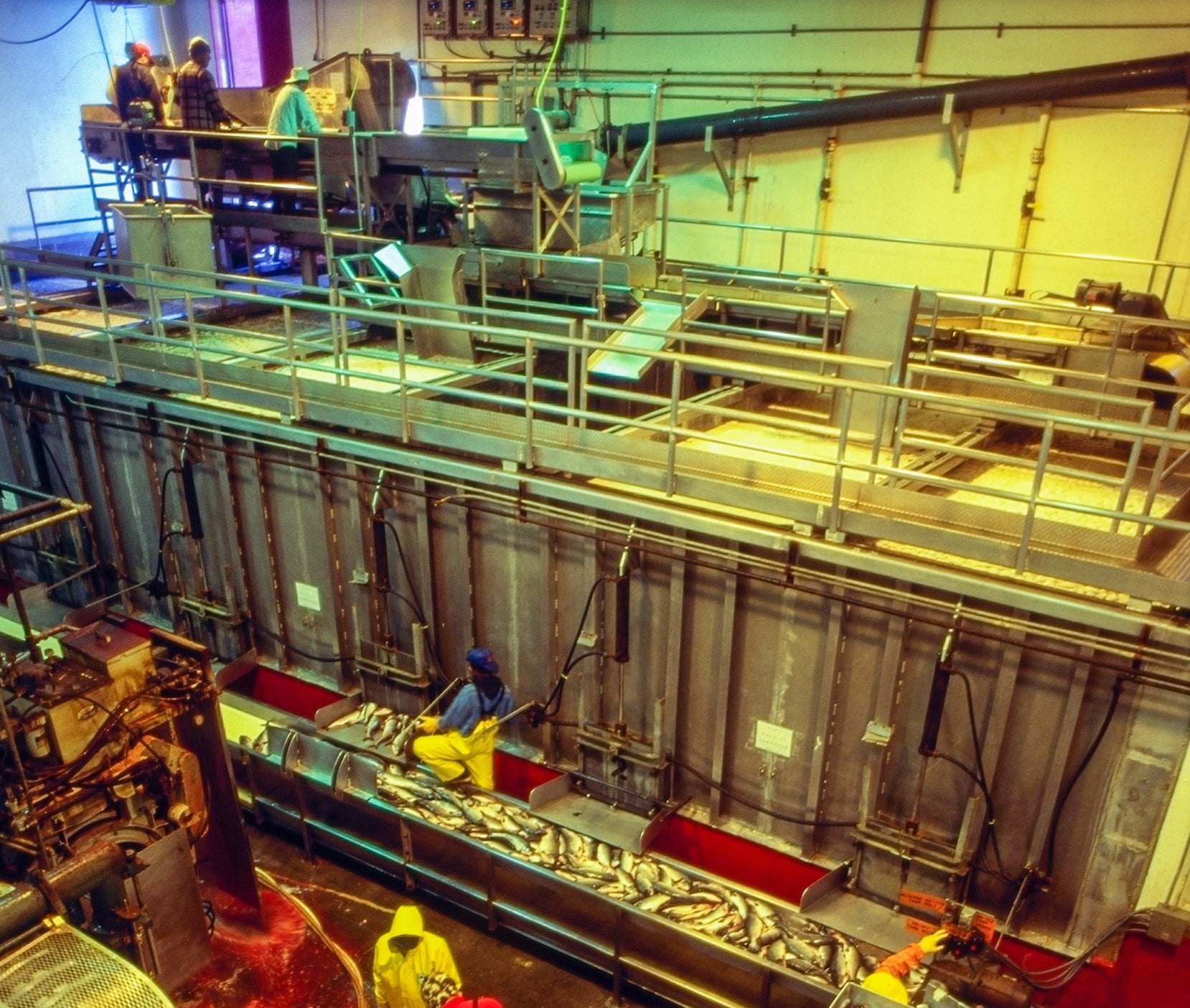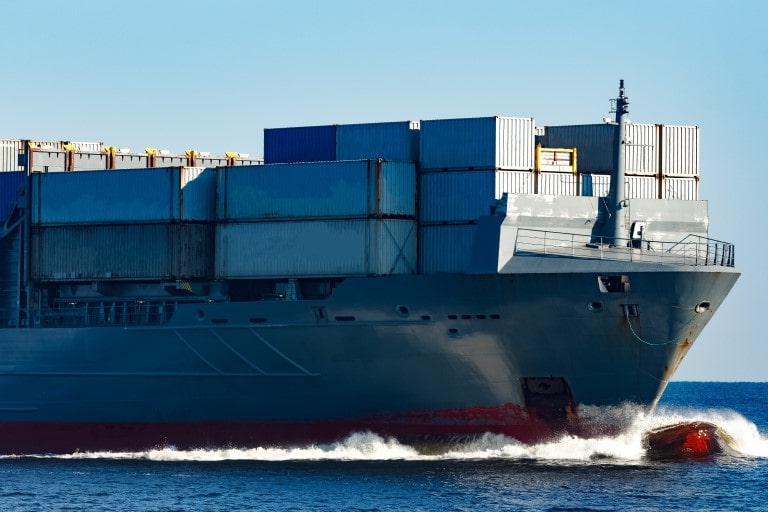Two industries have real problems yet might be able to help each other out. Shipping container lines have massive overcapacity while, due to regulations and an infestation of sea lice, the salmon farming industry is facing a rapid fall in output. Could mothballed ships be used as salmon farms?
Cargo shipping overcapacity

A few years ago, shipping lines went on a cargo ship building binge, anticipating an upturn in the global economy. While the ships were built, the economy didn’t go in the direction they believed it would. Consequently industry insiders believe that there is a global overcapacity in the container shipping sector of around 1.5 million TEUs, even as 500,000 TEUs worth of container ships (100 Panamax sized ships) are scrapped annually.
Reading the news you may have seen that this is one of the reasons the Hanjin Shipping Line collapsed in August. Because there is far too much idle cargo capacity on the high seas, the cost of moving a container around the world is so cheap for the customer it barely covers the costs of getting the container from A-B.
Again, insiders believe that the 150 or so ships owned by Hanjin won’t just be sent for scrap. While other shipping lines teeter on the brink, the collapse of the 7th largest in the world won’t impact the size of the global fleet.
Salmon and lice

At the same time that the container shipping industry is struggling, so is the salmon farming industry. Sea lice are a parasite that kills intensively farmed salmon, and can get through the nets into the ecosystem outside. Salmon farmers have been using chemicals to kill off the lice but again, this gets into the environment and hurts the outside ecosystems.
Regulators are cracking down on salmon farms around the world because of the huge damage they cause the seas around them. One answer may be instead of keeping the salmon in nets, to keep them in mothballed or end of useful life cargo ships.
A bid to use a ship as a salmon farm

With sea lice causing a general decline in global output, the world’s biggest salmon farming company Marine Harvest ASA has asked for people to come up with proposals to build enclosed salmon tanks. One of the ideas taken very seriously has been to convert an idle or end of life cargo ship.
In many ways container ships are already the right configuration for salmon farming. In the image you will see that they have a number of watertight holds where the containers slot in. Where the hatch would be closed and containers stacked on top for its journey to sea, the holds would now be left open.
One of the weaknesses of a container ship against a bulk cargo ship is that the holds are only 41 or so feet long as against the bulk carrier that may have 100ft long holds. The container ship would have more tanks fitted to hold the salmon – an added expense against the bulk cargo ship. For a bulk cargo ship it may cost around $2.5 – $5million to add the tanks and pumps to make it an operable salmon farm. The container ship would cost nearer the top end of that.
Money for idle capacity?
Rather than sail their ships around the world empty, container shipping lines are mothballing their idle capacity. They still cost money for general maintenance, a skeleton crew, and keeping them in port ready to go at an unspecified time – possibly 2-3 years in the future.
It would make sense then for a shipping line to rent out its mothballed ships to a salmon producer. They can charge a reduced day rate that covers the costs of maintenance and machinery, while the salmon producer can break new ground into an ecologically and animal welfare friendly new way of producing farmed salmon. Could this be a win-win solution for both industries?
Gateway Container Sales for second hand shipping containers
Here at Gateway Container Sales we supply used containers to people for a range of uses from building homes, to safe storage solutions. Drop us a line today to discuss your shipping container needs and our team of experts can help you turn your dreams into reality whether it’s a fish farm or a garden shed you require.




